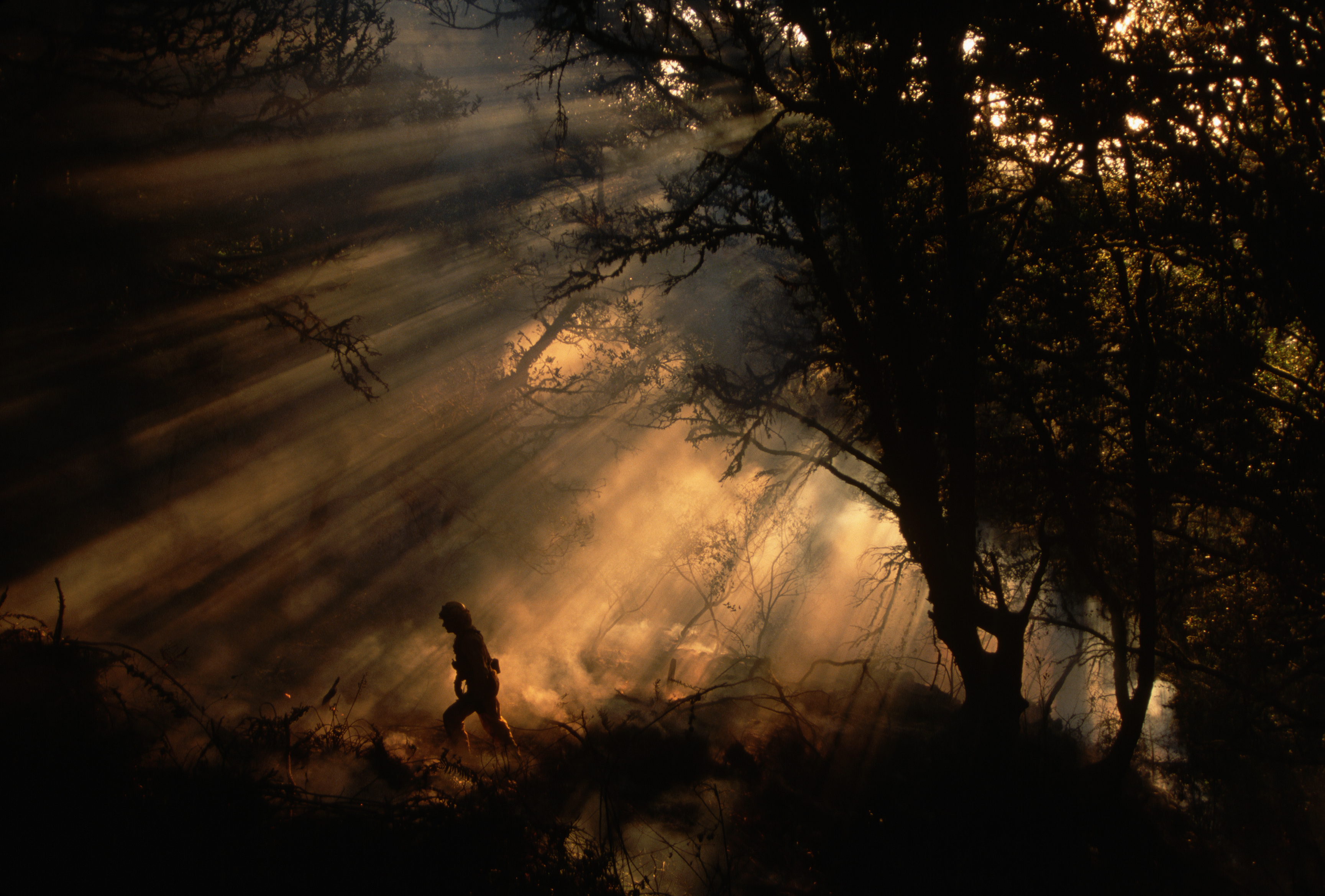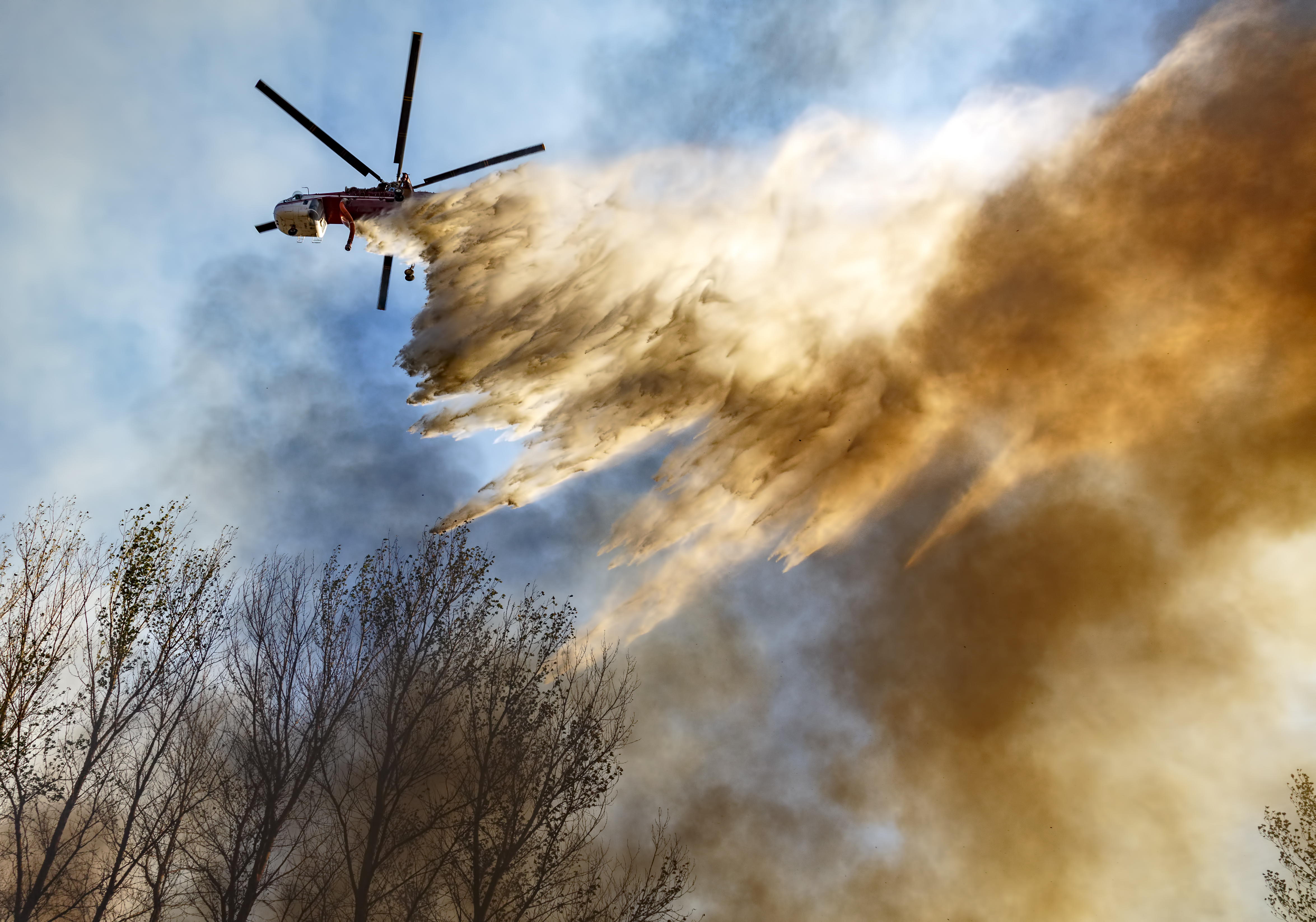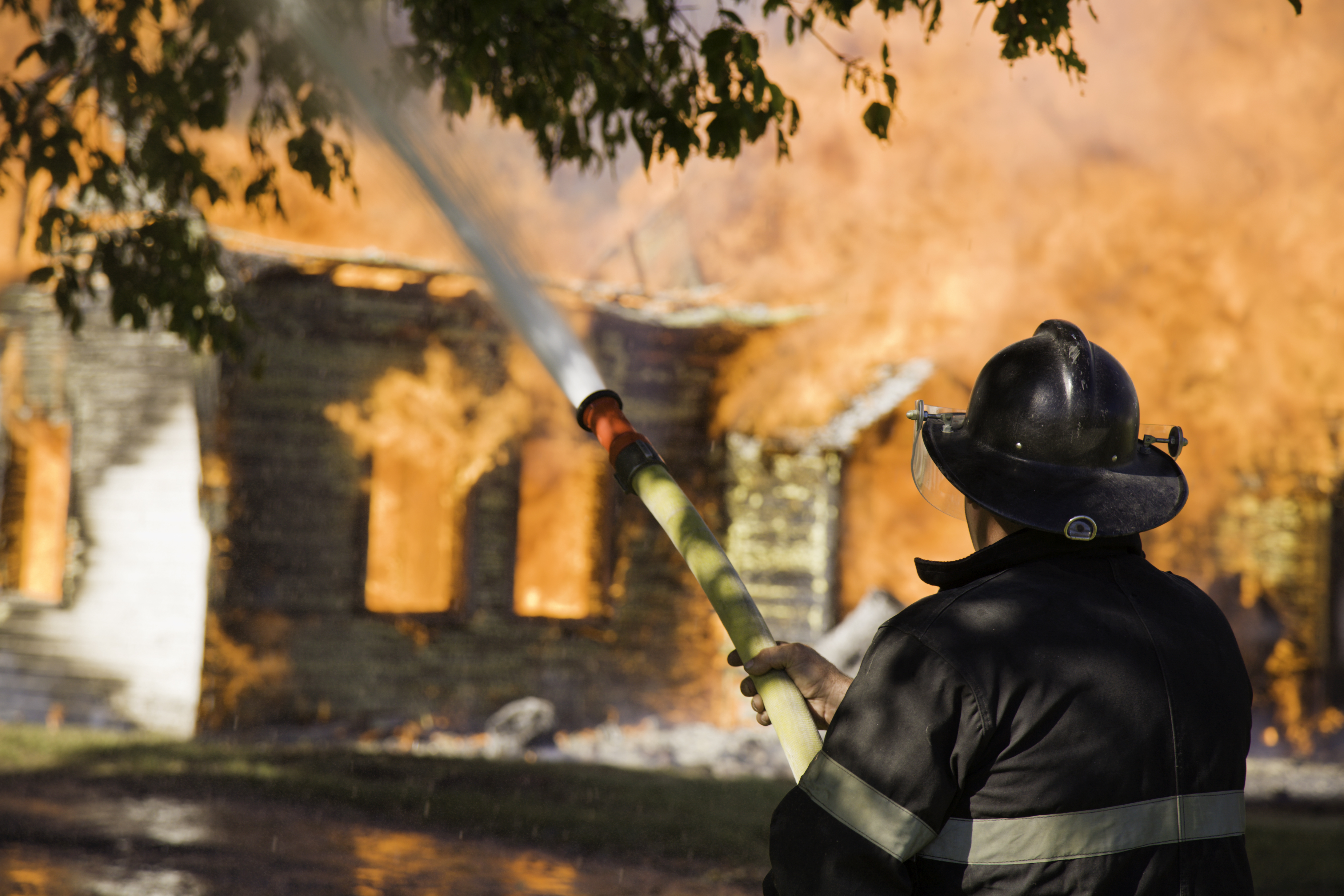Prepare for a California Wildfire Before Disaster Strikes

California is on fire — again. Wildfire season in the Golden State is off to a menacing start. While September and October are typically the worst months for large destructive infernos, extreme heat and drought conditions in the Western U.S. have created acres upon acres of dry, flammable vegetation while a lack of snowpack is contributing to fires at higher elevations.
So far this year, Cal Fire reports that more than 6,000 fires have erupted throughout the state, scorching nearly 600,000 acres — and it’s only the beginning of August. Although 2020 was the worst wildfire season California has ever experienced, with more than 4 million acres burned, fire experts caution that the 2021 season could be even worse.
But despite the grim outlook, California property owners aren’t completely powerless when it comes to protecting their homes and families against an imminent blaze.
In this guide, we’ll discuss how to prepare for a wildfire by creating an evacuation plan, preparing your home when a fire is headed your way, and what to do if you’re told to evacuate.
Plan for a Wildfire Before Disaster Strikes
More than 4.5 million homes in the U.S. are at “high or extreme risk” of wildfire, with more than 2 million properties in California alone. A wildfire can ignite at any time throughout the year, but they’re most common during prolonged periods of little-to-no rainfall, so typically in the late summer and fall. However, with the changing climate, wildfires are starting earlier and earlier each year.
Before peak wildfire season hits, here are some proactive approaches to plan for a wildfire so that you and your family can be ready in case disaster strikes.
Stay Informed
If a wildfire breaks out, the most important information will come from your local government, namely the California Department of Forestry and Fire Protection (Cal Fire). Thanks to advances in technology, officials can notify residents about fire danger and relevant evacuations. California residents can check real-time fire updates and sign up for text messages at Ready for Wildfire.
Counties have also created more targeted emergency notification systems. In fact, many counties have partnered with the private company Nixle to distribute information to a larger area. These notifications often include road closures, general safety information and post-disaster information. Find out if your county is included by texting your zip code to 888-7777 or visiting https://local.nixle.com/.
Develop an Emergency Communications Plan
You and your family might not be together if a wildfire erupts near your home. Therefore, it is crucial that you establish an emergency communications plan to determine how everyone will check in throughout the course of an emergency. Keep in mind that cell towers and landline phone systems are often overwhelmed during and following a disaster, so you may need to use another source like an app or social media channel to communicate with friends and family.
After determining which channels you’ll use to communicate, write down important numbers and keep them in your wallet in case you can’t access your cell phone’s contact list. Also, assign a point person outside your community (such as a relative in another state) who can act as a point of contact to help your family get in touch with each other. It’s often easier to call or message this individual and let him or her reach out to everyone else in your family or household so you can focus on evacuating.
Establish Your Evacuation Routes
Consider that you may have only moments to gather your household during an emergency such as a wildfire. Establish a set meeting location if you and your family or housemates get separated during an evacuation. Be specific, such as an area of a park, a city landmark, or in front of a store. Map out primary routes and backup routes to your evacuation destination in case roads are closed or inaccessible. For anyone who doesn’t know the way to the meeting point by heart, write down the directions or be sure to have a map handy.
Make certain you understand your community’s emergency response plan and know which routes to take during an evacuation.
Fire-Proof Your Home as Much as Possible
Before fire season hits, plan to upgrade your home with fire-resistant improvements. Each house is different, so it’s tricky to give a general recommendation for all homes. But as a general rule, you’ll want to harden your home from the exterior and look for the weakest spots. Start assessing at the top and work your way down.
- Roofs and Gutters: The most common way a house catches on fire is by small flying embers that land on the roof. Your first line of defense is to replace any shingles made of combustible materials with some type of fire-resistant material, such as clay or metal.
- Attics and Foundation Vents: Your attic and foundation vents can actually suck burning embers inside your home and ignite your interior. Attach fine mesh screens to your foundation vents or replace them with stainless steel, ember-catching screens that provide an additional line of defense.
- Windows: Radiant heat can melt plastic skylights and cause the glass in your windows to break or completely burst, letting embers and flames enter your home. By installing high-impact windows, you’ll give your home a better chance of withstanding extreme temperatures.
- Garage Doors and Exterior Walls: Garage doors are another susceptible area. Often made of easily flammable materials, garage doors can create an entry point for wildfires. You can also retrofit your home’s exterior walls with fire-resistant stucco or some type of synthetic siding, such as poly ash, which won’t rot or burn.
If you can’t pay out of pocket for fire-resistant upgrades, Ygrene’s PACE financing allows homeowners to leverage the equity in their homes to finance resiliency upgrades. Rather than paying upfront, PACE gives you the flexibility to pay for your home improvement over time as part of your property tax bill.
Keep in mind that fire-resistant construction increases the likelihood of your home surviving a wildfire, but it’s not a guarantee.
Purchase Necessary Supplies
As you’re heading into fire season, make sure you have all the supplies on hand to prepare for a power outage or evacuation. Here’s a list of essentials to get you started:
- Smoke detectors
- Fire extinguisher
- Back-up generator and gas can
- Headlamp, flashlight or battery-operated lantern
- Spare batteries
- Fireproof document safe
- First aid kit
- Emergency radio (battery operated)
- Water container and extra water
- N95 particulate respirator to help you breathe through wildfire smoke
- USB battery pack
- Non-perishable food items
Make Copies of Important Documents and Review Insurance Policies
In the wake of a disaster, you may have to prove who you are and that you are indeed the owner of your home. Plan ahead by making copies of your important papers and identifying information such as your driver’s license, social security card, passport, and birth certificate. Be sure to make a copy of the deed to your house as well, along with any crucial medical records you may need to have handy.
Your homeowners’ insurance policy covers damage from fire, and this includes wildfire. If your home suffers fire damage or burns entirely, there are different types of coverage to help you repair or rebuild your house. Your coverage will also help you replace belongings and can even cover temporary housing for a certain length of time.
If you haven’t reviewed your homeowner’s policy in a while, now is the time to look it over and make sure you have the right amount of coverage for your home and valuables. Make copies of your policy details, too.

What to Do When a Wildfire Erupts Nearby
If a wildfire breaks out in your county or region but is still far enough away that it doesn’t cause immediate concern, it’s time to start preparing for smoke and a potential evacuation.
Clear Your Yard of Debris
If you haven’t taken the time to create a defensible space, meaning a 30-to-100-foot safety zone around your home, there’s still time to reduce possible exposure to flames and radiant heat. You might not have time to thin the recommended 15-foot space between tree crowns, but you can gather and clear any dead limbs, dry leaves, pine needles, and other flammable vegetation around your lawn. Be sure to sweep debris from your roof and gutters, and prune any shrubs or branches around your chimney and windows.
Move woodpiles, lawn furniture, tarp coverings, and any other items that can burn at least 30 feet away from your house. It’s also a good idea to clear a 10-foot area around propane or oil tanks, barbeque grills, and anything else that can act as a fuel source.
Pack a “Go Bag”
A “go bag” is something you want to pack in case you’re away from home for a few days — or longer. You’ll want to pack some of the supplies you purchased, such as the N95 respirator, emergency radio, small first aid kit, headlamp or flashlight, spare batteries and copies of your important documents.
Other items you may want to include in your go bag are:
- Hygiene and sanitation supplies (toilet paper, feminine products, baby wipes, etc.)
- Spare eyeglasses or contact lenses
- Energy snacks (protein bars, nuts, trail mix, dehydrated meals)
- Sturdy closed-toe shoes (preferably boots)
- Leather or heavy-duty work gloves
- A map with at least two evacuation routes marked
- Water bottle(s)
- Prescriptions
- Full coverage goggles
- Cell phone charger
- Extra set of car and house keys
- Cash or traveler’s checks
- Pet supplies (carriers, leashes, food)
Put Your Valuables Together
If a wildfire ignites close to you, be proactive by storing your easily carried valuables in a fire-resistant container that you can grab in a hurry on your way out the door. Focus on items that are irreplaceable, like special photographs and albums, your child’s favorite toys, family heirlooms and keepsakes, and any valuables that you would be distraught if you lost.
Also think about which items would be a hassle to replace, such as marriage licenses, firearms, vehicle titles, and legal documents (wills, financial paperwork, guardian papers, medical directives, power of attorney, etc.). Put these with your other important documents.
Prepare for Smoke and Poor Indoor Air Quality
Even fires that aren’t in your immediate vicinity can create poor air quality. A wildfire that is nearby can lead to smoky conditions that irritate your eyes, nose, throat, and lungs — making it difficult to breathe. Women who are pregnant, children, people with asthma or chronic obstructive pulmonary disease (COPD), and those with heart disease must be especially careful.
It’s obviously better to stay indoors with the windows closed. If you have central AC, keep it running with the fresh-air intake closed. You can also prepare for smoke with an energy-efficient air purifier (which qualifies for Ygrene financing) that will help clear harmful smoke particulates. The most effective air purifiers are fitted with HEPA filters, which use a fan to force air through a fine mesh, which traps the microscopic particles. If you also want to get rid of the smoke smell, look for an air purifier that has a large carbon filter to absorb the odor.

When an Evacuation Warning is Issued
An evacuation warning is a voluntary evacuation that should be taken seriously. Oftentimes, these warnings become evacuation orders, meaning you must evacuate.
Practice Your Emergency Evacuation Plan
Review your emergency evacuation plan with your family or other members of your household. Know how to safely exit your house as quickly as possible, and what the alternate routes are in case a fire blocks your doorway. If there are bedrooms on the second or third floors, have towels handy to help plug smoke from seeping in through cracks in the door. It’s not a bad idea to have a rope tied to an upper deck or a fire escape ladder that can hang from a second-story window if you need to flee in the middle of the night.
Prepare Your Home and Ready Your Vehicle
Although evacuation warnings are voluntary, you never know how soon the wind could shift and the fire could change course, forcing a hurried escape in the middle of the night. Therefore, if you choose to stay in your home, ready your vehicle by making sure you have at least a half-tank of gas and backing your car or truck into the driveway. Make sure there’s enough room to accommodate fire trucks and other large equipment. Leave the doors to your vehicle unlocked, but roll all the windows up to prevent excessive smoke from reaching the interior.
Prepare your home by closing the outside attic, eaves, and basement vents. Be sure to shut windows, shutters, blinds, glass doors, and any pet doors. Consider removing drapes and curtains; these pieces of home decor are often flammable and can allow a fire to spread quickly. Open the damper to your fireplace, but close the fireplace screen.
Before you go to bed, shut off any natural gas, propane, or oil supply at the source and fill any pool, hot tub, garbage cans, or other large containers with water. Douse your roof, above-ground fuel tanks, and lawn with as much water as possible — leave the sprinklers on overnight if you have enough water to do so.
Monitor Fire Conditions
Carefully monitor fire conditions by staying tuned to a local news station that will provide regular updates on the wildfire in your area. Follow your county’s Cal Fire division on Twitter and Facebook for the latest incident reports. Be sure to check in with your neighbors in case they receive information first and vice versa.
When an Evacuation Order is Issued
An evacuation order is the most severe — it means you must leave your home immediately due to imminent danger. These orders may be initiated by law enforcement, fire officials or public health agencies.
Heed Evacuation Instructions
Immediate evacuations are highly stressful, potentially life-threatening situations. Whatever you do, don’t stay on your property. In California, choosing to ignore an evacuation order is a criminal offense. You could face a fine of up to $1,000 or a jail sentence of one year.
Not only does failure to follow an evacuation order put your life in danger and leave you stranded without food and water, but it also puts firefighters lives’ in danger when they have to save someone who made a bad decision.
It’s Time to Execute Your Evacuation Plan
When it comes time to evacuate, try to stay as calm as possible. You can help firefighters by turning on your outside lights and placing a ladder against your home, in plain view. If you have time, disconnect automatic garage doors so that they can be opened by hand if the power goes out.
Wear clothing (long sleeves and long pants) that will help protect you from flying embers. Bring a wet cotton towel or handkerchief to protect your face as you exit your home.
Execute the evacuation plan you’ve practiced with the members of your household. Grab the items you’ve packed and prepared, load your children and pets into your vehicle and follow the evacuation instructions you’ve been given to safely vacate your neighborhood. Never return to your home until you’ve been given the official clearance, as there may still be hotspots, dangerous debris or hazardous materials near your home.
Use PACE to Make Fire-Resistant Upgrades Today
Wildfires are terrifying events that are sadly becoming more common as our climate changes. In 2020 alone, California wildfires destroyed or damaged more than 10,000 buildings and killed more than 31 people.
But with the proper wildfire evacuation planning, and hardening your home against a potential blaze, you can keep your family safe and protect your assets to the best of your ability. If you live in California and need to make fire-resistant upgrades but can’t afford to pay out of pocket, click here to see if Ygrene’s PACE financing is available in your area. Don’t let a wildfire catch you off guard — prepare your home today.




